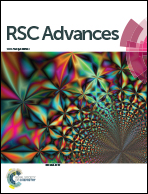Adsorption of metal ions by clays and inorganic solids
Abstract
This review deals with adsorption of metal ions, particularly those considered as hazardous, on clays and some inorganic solids and covers the publication years 2000–2013 describing and quantifying the use of isotherms to obtain the adsorption capacities of the solids. The inorganic solids in the review include clays and clay minerals, their modified forms (obtained by treatment with acids and alkalis, organic functionalization, etc.), zeolites, silica gel, soil, river sediment, activated alumina, inorganic polymers, red mud, inorganic oxides, fly ash, etc. The use of two parameter and three parameter linear isotherms are only discussed with a view to obtain quantitative description of adsorptive accumulation and separation of metal ions from aqueous solution on the solids. The extensively used isotherms are those of Freundlich, Langmuir, Dubinin–Radushkevich and Redlich–Peterson. How these isotherms are being used to obtain the adsorption capacities along with their interpretations form the bulk of the review. The review is divided into sections, each describing the use of a particular isotherm. The metal cations receiving immense importance in adsorption studies are As(III)/As(V), Cd(II), Cr(III)/Cr(VI), Cu(II), Co(II), Pb(II), Ni(II), Hg(II), and Zn(II), and the review covers both the cationic and the anionic metal ions. A few other cations such as Mn(II), Fe(III), Se(V), which have not received much attention, are also covered.


 Please wait while we load your content...
Please wait while we load your content...